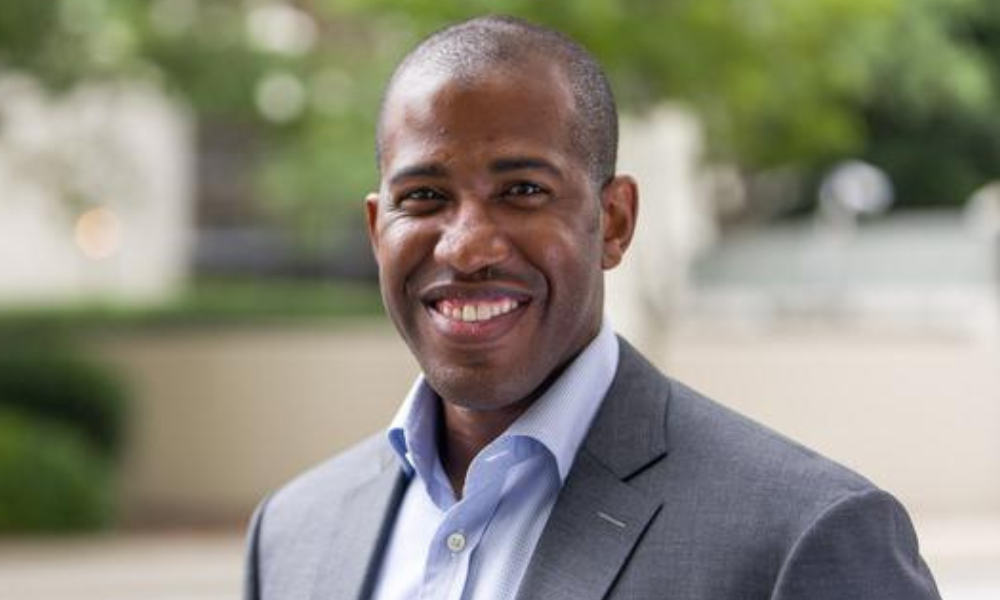
HR should be looking at job application process, using tech for interviews and 'casting a broad a net as possible,' says HR leader

“Even though the market has cooled off, I don’t know that it has gotten significantly easier to find talent.”
So says Rod Adams, talent acquisition and onboarding leader at PwC.
“The competition for talent is still pretty stiff, and that’s probably driven by the fact that a lot of people made moves in that period of time everyone loved to call the Great Resignation. Now they’re in new environments and getting settled and are less likely to make another move.”
“It’s making it hard to fill the open roles we have, but we have less that we’re trying to fill than we did a year ago,” Adams told HRD.
Adams, who has spent more than 25 years at PwC, takes a deep dive on how to make recruiting and interviewing more efficient, how to find diverse talent and the key skills and attributes he looks for in job candidates.
More than two-thirds (71%) of HR leaders missed out on hiring a top candidate last year due to inefficient processes, according to KarmaCheck’s 2023 State of Hiring and Recruiting Report.
Specifically, interview scheduling issues (53%) and slow screening and evaluation (42%) were blamed as the top reasons that candidates who received an offer didn’t accept.
To avoid those issues, Adams recommends a technology-enabled strategy to source talent and streamline the application process. For example, HR leaders should determine if it’s quick and easy to fill out a job application at their company. Are you asking for too much information from a candidate, and if so, can they automatically pull that info in from their LinkedIn profile?
Scheduling interviews can also be tech-enabled.
“We’re all used to making reservations on OpenTable,” Adams says. “You want to create experiences closer to that versus back-and-forth phone calls trying to figure out what day and time for the interview. In addition to phone calls, texting is something else we’ve done. It shouldn’t be the main form of communication with candidates, but there is a time and place where texting creates an efficiency for the candidate and recruiter.”
Adams also advises against “over-interviewing” – forcing a candidate to jump through hoops of a half dozen interviews – and waiting too long for approval to make a job offer.
When looking for entry-level talent, Adams encourages HR leaders to “cast as broad a net as possible” and make sure universities are part of your recruiting strategy. In fact, PwC recruits from more than 40 Hispanic-Serving Institutions (HSIs), more than 30 Historically Black Colleges and Universities (HCBUs) and several community colleges.
According to the KarmaCheck report, 90% of employers in the United States have at least one diversity goal when hiring. Age (60%) is the most common category tracked followed by gender (53%), race (51%), disability (41%), sexual orientation (28%), veteran status (27%) and “fair chance” status (26%).
That last category is no surprise considering that formerly incarcerated individuals are unemployed at a rate of more than 27%, according to the Prison Policy Initiative. That’s higher than the total unemployment rate during any period in the history of the United States, including the Great Depression and the height of the COVID-19 pandemic.
Leveraging employee referrals is also beneficial. “Have recruiters proactively engage with employees to tap into their network to find talent with the desired skills,” Adams says.
Regardless of the job a candidate is applying for, Adams looks for certain skills that are “critically important” for the modern workplace.
First and foremost, candidates should be intellectually curious and committed to upskilling. “That desire to continue learning and build new skills is important as the world around us continues to change,” Adams says.
Candidates should also possess relationship skills and the ability to drive impact in a hybrid working environment. Although employers are taking different approaches with their return-to-office (RTO) strategies, he says it’s clear that we’re operating in a more hybrid environment, which requires building trusted relationships virtually.
Candidates should also have the ability to be an inclusive leader. “When we think about diversity and inclusivity, you want someone who can create a culture of belonging where everyone can achieve their potential,” Adams says.
Last but not least, Adams looks for candidates who are agile and resilient. That’s not necessarily easy to detect on paper, as hiring managers typically determine if a candidate has those qualities by digging into their experiences during the interview process.
But one way to get a sense of them when looking at a resume, he says, is if a candidate has demonstrated longevity at a single company. “I’m not saying you have to be somewhere for 20 years, but multiple years at an organization, especially in the climate we’ve been in, shows some level of resiliency and agility,” Adams says.
“Now, I wouldn’t 100% rely on that because the job interview is a critical test. But knowing how organizations have evolved the last few years, if someone has stuck it out and worked through change, that’s a potential sign.”